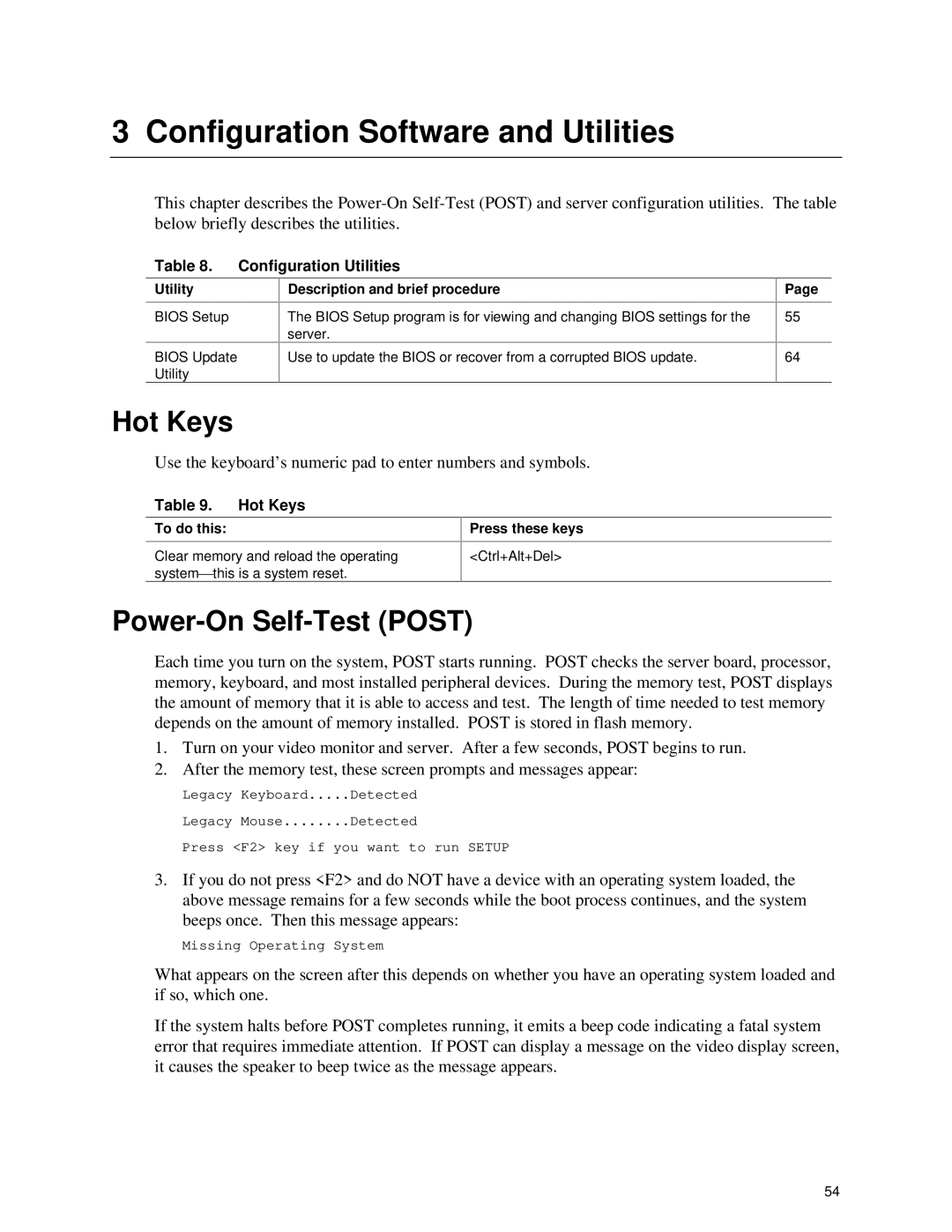
3 Configuration Software and Utilities
This chapter describes the
Table 8. | Configuration Utilities | |
Utility |
| Description and brief procedure |
BIOS Setup |
| The BIOS Setup program is for viewing and changing BIOS settings for the |
|
| server. |
BIOS Update |
| Use to update the BIOS or recover from a corrupted BIOS update. |
Utility |
|
|
Page
55
64
Hot Keys
Use the keyboard’s numeric pad to enter numbers and symbols.
Table 9. Hot Keys
To do this:
Clear memory and reload the operating system⎯this is a system reset.
Press these keys
<Ctrl+Alt+Del>
Power-On Self-Test (POST)
Each time you turn on the system, POST starts running. POST checks the server board, processor, memory, keyboard, and most installed peripheral devices. During the memory test, POST displays the amount of memory that it is able to access and test. The length of time needed to test memory depends on the amount of memory installed. POST is stored in flash memory.
1.Turn on your video monitor and server. After a few seconds, POST begins to run.
2.After the memory test, these screen prompts and messages appear:
Legacy | Keyboard | Detected |
Legacy | Mouse | Detected |
Press <F2> key if you want to run SETUP
3.If you do not press <F2> and do NOT have a device with an operating system loaded, the above message remains for a few seconds while the boot process continues, and the system beeps once. Then this message appears:
Missing Operating System
What appears on the screen after this depends on whether you have an operating system loaded and if so, which one.
If the system halts before POST completes running, it emits a beep code indicating a fatal system error that requires immediate attention. If POST can display a message on the video display screen, it causes the speaker to beep twice as the message appears.
54
